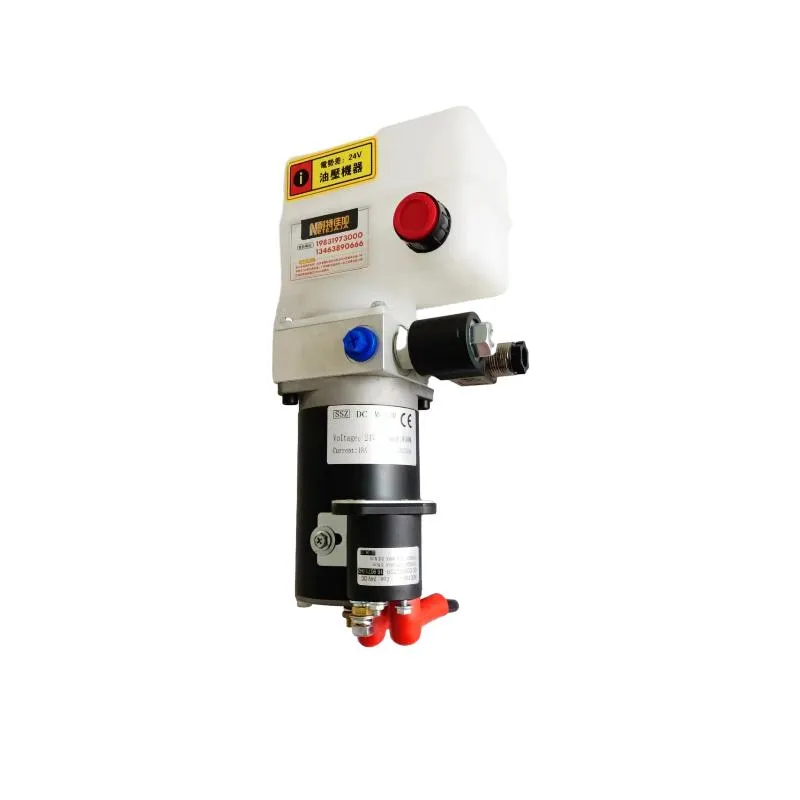Aug . 01, 2024 05:31 Back to list
Manufacturing Excellence in Dual Hydraulic Cylinder Production and Design Solutions for Various Industries
Understanding Dual Hydraulic Cylinder Factories
In modern industrial applications, hydraulic systems have become central to the operation of various machinery, from construction equipment to manufacturing lines. A key component of these systems is the hydraulic cylinder, specifically dual hydraulic cylinders which offer enhanced power and precision. This article delves into the significance of dual hydraulic cylinder factories, their operations, and their contributions to various industries.
Dual hydraulic cylinders consist of two separate cylinders that operate in tandem to produce a greater force output. This configuration not only increases the efficiency of hydraulic systems but also allows for better load distribution, reducing wear and fatigue on the equipment. Typically, these cylinders are employed in applications that require high force and precision, such as in the aerospace, automotive, and heavy machinery sectors.
The manufacturing process within a dual hydraulic cylinder factory is intricate and requires advanced engineering and technology. It involves several stages, including design, material selection, machining, assembly, and testing. Engineers start by designing the cylinders using computer-aided design (CAD) software, ensuring that each component meets the specific requirements of strength and durability. Materials such as high-strength steel or aluminum alloys are commonly selected for their excellent tensile properties and resistance to corrosion.
Once the designs receive approval, the machining process begins. High-precision CNC (Computer Numerical Control) machines are employed to cut, shape, and finish each component to exact specifications. This stage is critical as it impacts the overall performance and reliability of the hydraulic cylinders. After machining, various components such as rods, barrels, and end fittings are assembled together. This assembly process often incorporates advanced technologies, including automated robotic systems that enhance efficiency and precision.
dual hydraulic cylinder factory

Testing is another crucial aspect of the manufacturing process in a dual hydraulic cylinder factory. Each cylinder undergoes rigorous quality assurance protocols to ensure that it can withstand high pressure and perform consistently under load. Tests may include pressure testing, leak testing, and performance evaluations, simulating the conditions to which the cylinders will be exposed in the field. This step is vital as it guarantees that the products not only meet but exceed industry standards.
Moreover, dual hydraulic cylinder factories play a pivotal role in research and development. As technology progresses and industries evolve, the demand for innovative hydraulic solutions increases. Engineers and design teams work collaboratively to develop new models that enhance functionality, incorporate smart technology, and improve energy efficiency. This focus on innovation enables businesses to remain competitive in a rapidly changing market.
Sustainability has also become a focal point for many dual hydraulic cylinder factories. In line with global efforts to reduce environmental impact, manufacturers are increasingly adopting eco-friendly practices. This includes optimizing the use of materials, reducing waste during production, and implementing recycling programs for used hydraulic components. Moreover, some factories are exploring the development of hydraulic systems that require less energy, thus contributing to a greener industrial landscape.
In conclusion, dual hydraulic cylinder factories are indispensable in the modern manufacturing and industrial sectors. Through advanced engineering, meticulous manufacturing processes, and a commitment to innovation and sustainability, these factories contribute significantly to the performance of hydraulic systems. As industries continue to advance, the role of dual hydraulic cylinders will only grow, underscoring the importance of these factories in shaping a more efficient and sustainable future. The continuous evolution in technology and manufacturing practices will further enhance the capabilities of hydraulic systems, providing businesses with the tools they need to thrive in a global economy.
-
Fork Lift Power Units - Hebei Shenghan | Efficiency, Reliability
NewsJul.13,2025
-
1.5-Ton Turbocharged Cylinder-Hebei Shenghan|Hydraulic Solution,Energy Efficiency
NewsJul.13,2025
-
Auto Hoist Power Units-Hebei Shenghan|Efficiency&Industrial Lifting
NewsJul.13,2025
-
Double Acting Power Units-Hebei Shenghan|Hydraulic Solutions,Industrial Efficiency
NewsJul.13,2025
-
1.5 Ton Lifting Cylinder 70/82-40-290-535 - High-Performance Hydraulic Solution | Hebei Shenghan
NewsJul.13,2025
-
Fork Lift Power Units - Hebei Shenghan | Efficiency&Reliability
NewsJul.13,2025
